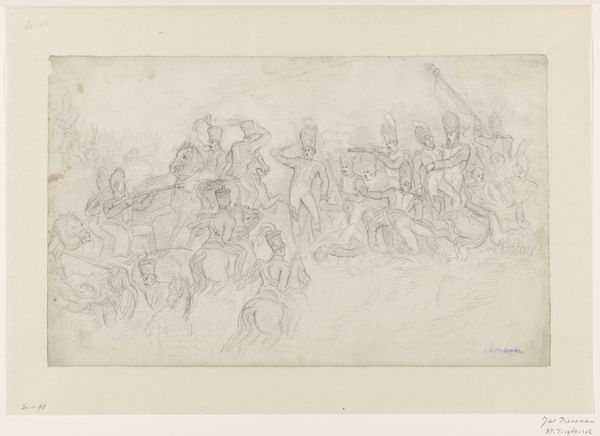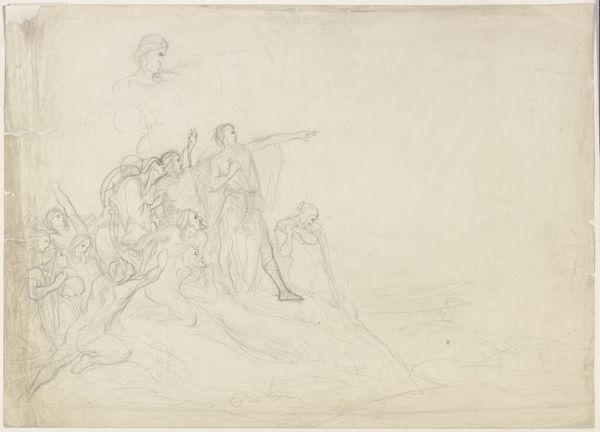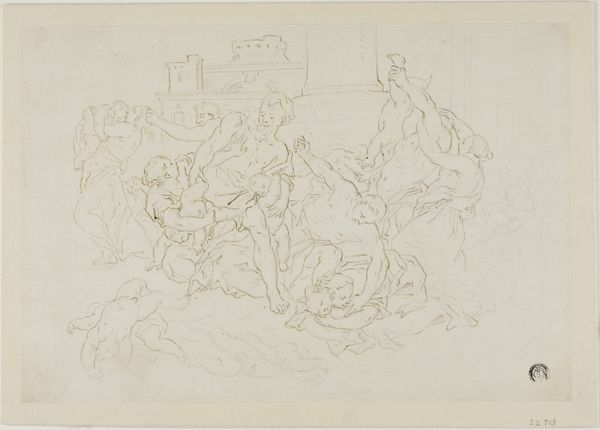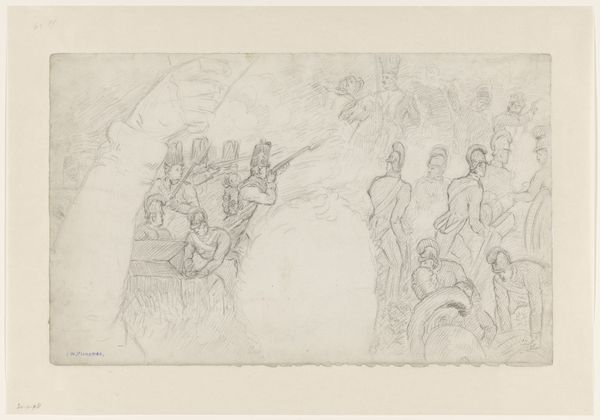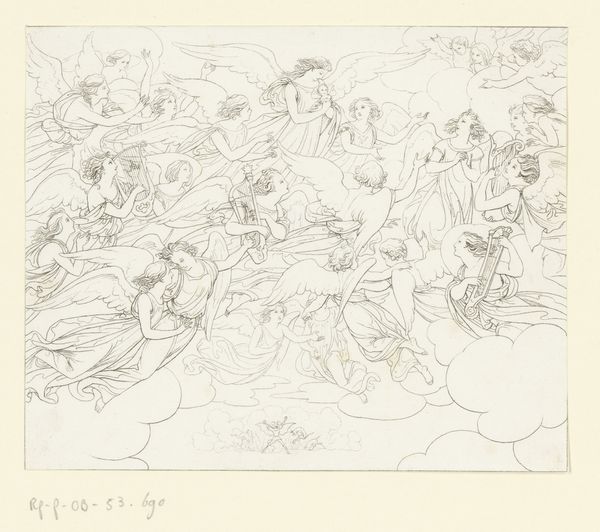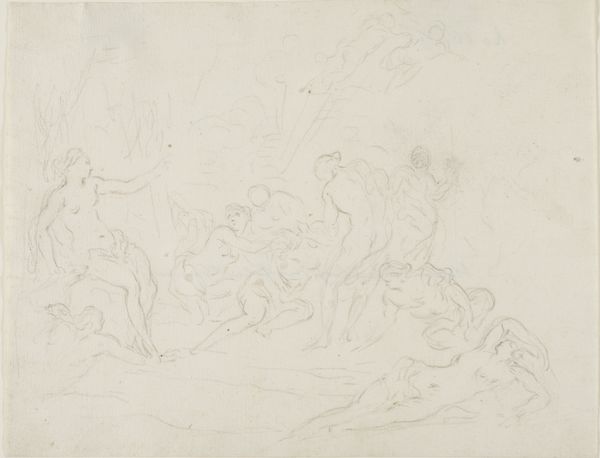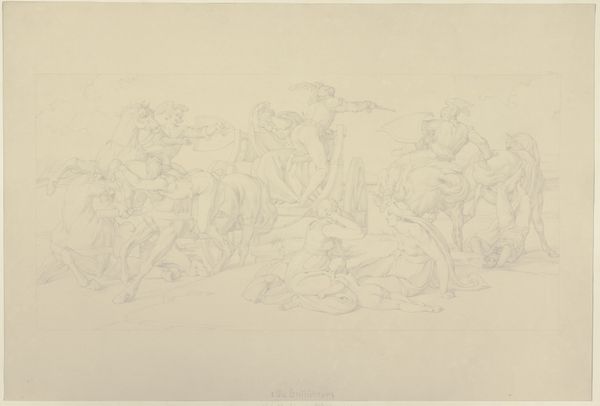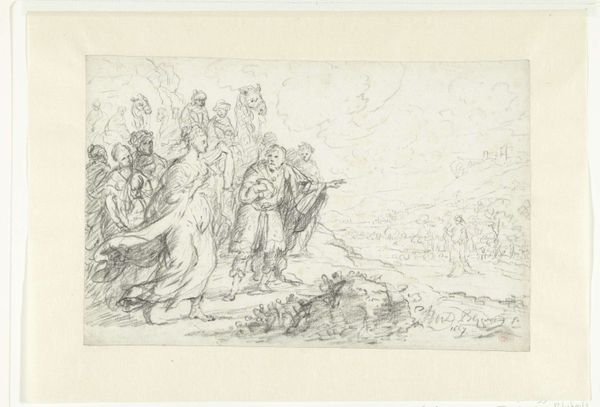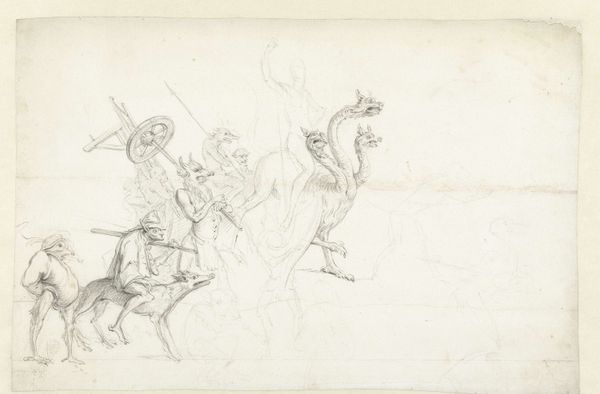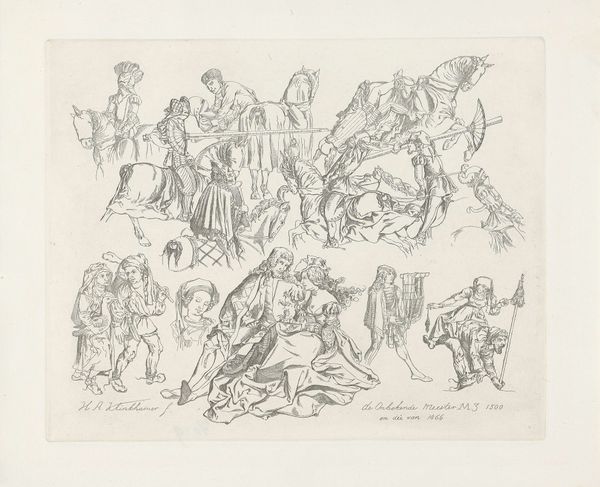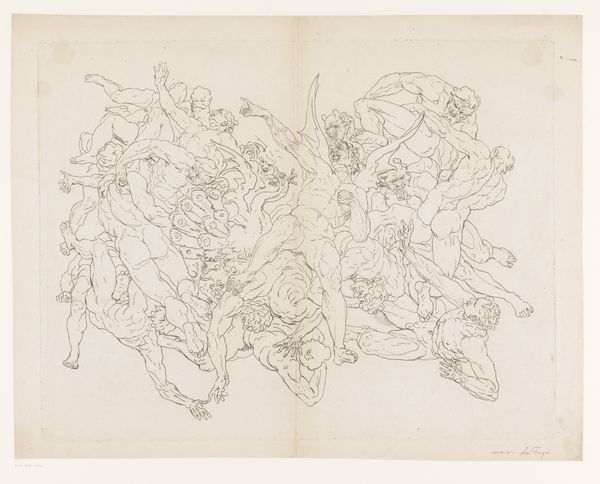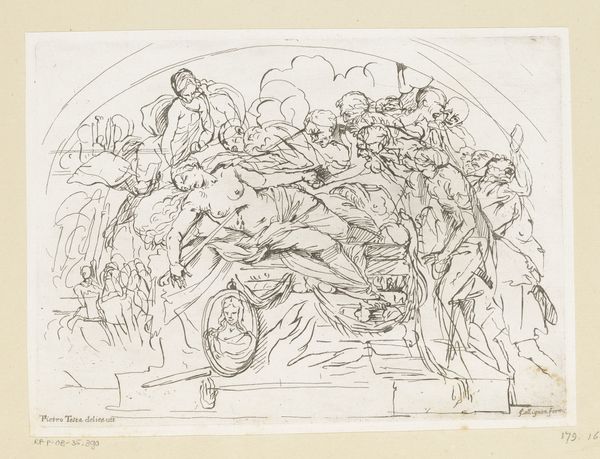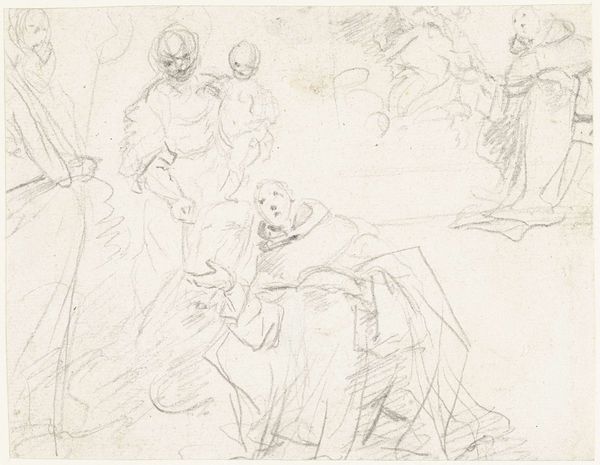
drawing, pencil, graphite
#
drawing
#
landscape
#
figuration
#
romanticism
#
pencil
#
graphite
#
history-painting
Dimensions: height 299 mm, width 483 mm
Copyright: Rijks Museum: Open Domain
Editor: This graphite and pencil drawing is titled "Study for The Battle of Waterloo," created around 1824 by Jan Willem Pieneman. It's at the Rijksmuseum. It has such an ephemeral quality; like a fleeting memory of conflict. What's your interpretation of the work, seeing it within its historical context? Curator: Pieneman here participates in a European-wide effort to represent and memorialize the Napoleonic Wars. This sketch offers insight into the staging of such representations. We see, not a battle in media res, but an effort to understand how the heroic individual exists amidst the chaotic movements of war. The light tonality also participates in this agenda, making the conflict one event among many that make up "history." Do you notice how the chaotic scrum of bodies contrast with the lone figure on horseback, rearing up? Editor: I do, it's really striking! It seems to underscore a tension between individual glory and the brutal reality for the masses involved. How would this preparatory sketch have informed Pieneman's eventual painting, and who exactly was that painting designed to address? Curator: Excellent question. By accentuating specific parts of the composition, Pieneman could have highlighted certain political perspectives of the battlefield itself. Think about how memorialization is often as much about celebrating a nation as about mourning loss. And, for whom do these memorials serve? Who gets remembered? Who is forgotten, or actively erased? Editor: So, the figures chosen, the poses struck...it all becomes part of a political statement about national identity. Curator: Precisely. Now, how might a contemporary artist approach the same subject matter, given the changes in warfare and the social values regarding conflict? Editor: That's fascinating to consider; I guess what struck me initially as ethereal might actually be part of a conscious construction of history and the public memory. Thanks for the insightful perspectives. Curator: Likewise. Thinking about art's role in shaping public understanding always keeps it relevant and helps us look critically.
Comments
rijksmuseum about 2 years ago
⋮
As a cavalryman falls from his horse, a cannon is fired close behind him. The artillery had little effect at Waterloo. Heavy rain on the previous evening had made the ground boggy, so it was hard to move the heavy cannons whose heavy cannonballs sank into the mud, rather than bouncing up to cause damage.
Join the conversation
Join millions of artists and users on Artera today and experience the ultimate creative platform.
